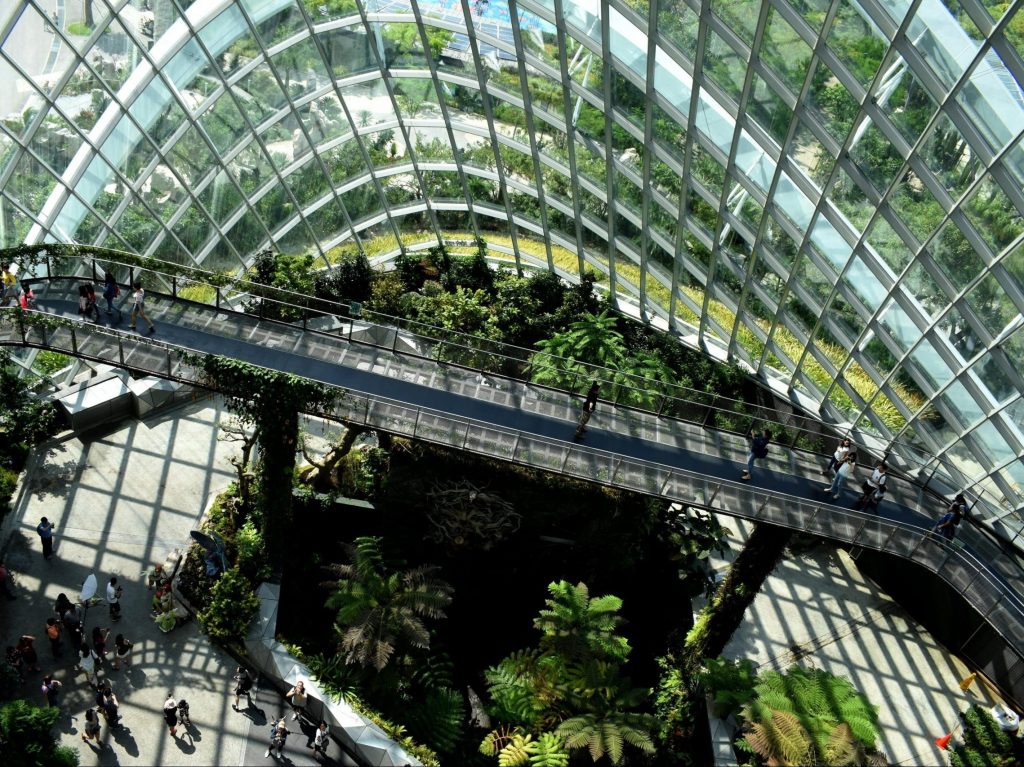Central to all sustainability considerations and practices is the commitment to delivering ongoing, long-lasting value.
But while sustainability focusses on future benefits, it can be tempting to primarily look at what can be achieved right now – rather than what can be implemented now, for benefits that won’t be felt for many years.
Structural steel offers sustainability benefits to be realised through the whole-life of a building, as it can be repurposed or reclaimed and reused.
While it is considered one of the more carbon-heavy construction materials when first created, its embodied carbon credentials will pay dividends later on in a buildings life. Embodied carbon is the carbon footprint of a material or process. In construction, it covers the CO2 emitted during the production, construction, use and deconstruction of a building.
Because steel structures can be repurposed or reused, they offer improved embodied carbon over their whole lifetime. By changing the way we think about a building’s design, construction and end-of-life, and understanding the opportunities available from structural steel, the construction industry can use steel to deliver on net zero targets for carbon emissions.
Understanding the solutions available
Understanding exactly what’s meant by the terms and phrases associated with sustainability – like embodied carbon, ‘cradle to cradle’ or circular economy – and being able to turn these into actions, is vital to achieving carbon reduction targets.
Circular economy methods look to design products, or buildings, to be reusable. They seek design processes which minimise waste and usage processes which extend the lifetime of an item.
Steel fits with this principal as it is not only fully recyclable, never being sent to landfill, but can also be repurposed or reused. As recycling is an energy intensive process, with its own environmental impacts, reuse of steel is a way to reduce embodied carbon.
Where ‘cradle to grave’ assessments used to ensure constructors were accountable for carbon emissions from the production and construction of a building, ‘cradle to cradle’ pushes this further. This factors in the ongoing emissions of a building long after its initial development, such as its energy efficiency.
One factor of ‘cradle to cradle’ assessments is considering what use a building may have in decades time. Reuse at end-of-life is achievable with structural steel thanks to the simplicity it offers for design through standardization or repetition of components and members.
Steel frame buildings can be repurposed by reconfiguring layouts to suit a new or updated use, or reclaimed and reused if whole sections of the structural steel are suitable for new developments. Either option will reduce embodied carbon of a building by reducing the energy intensive process of creating or recycling steel.
Currently only around 10% of steel is repurposed or reclaimed, against the 90% which is recycled through re-smelting. This is largely due to older buildings not being designed with reuse in mind, containing a wide variety of component types or grades that are more tricky to reuse at scale. While the industry adapts to reusing steel, existing ways of working are also contributing to carbon reduction.
Electric arc furnace (EAF) steel is made from 100% scrap, as opposed to virgin materials. This production method creates new steel from cold scrap steel, creating high quality, alloy and stainless grades and even some special carbon or low-alloy grades.
However, EAF production currently only accounts for around 30% of steel production, as scrap supply is unable to keep up with demand.
While reuse of steel and EAF recycled steel gradually become the norm, there are still benefits that can be enjoyed in the short-term from structural steel. Steel delivers time- and cost-savings during construction stage. It is durable, flexible and versatile for design and can also be used in challenging developments, to work within tight spaces or to create stand-out features.
Understanding the sustainability credentials of steel and applying the most appropriate methods will support developers to deliver both short- and long-term sustainability benefits in construction.
Learn more about steel’s sustainability in our Insights page.

